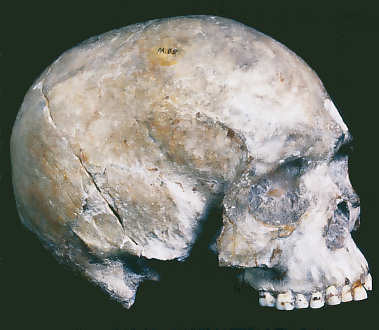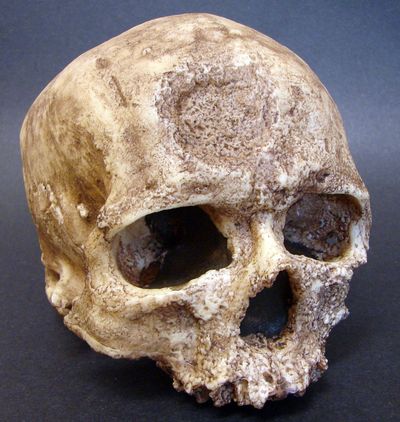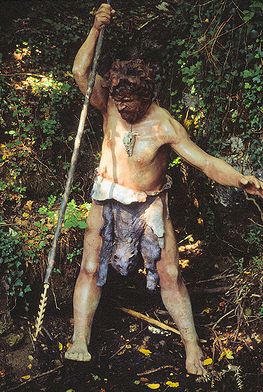 The Liujiang skull (left), from Guangxi Province in south China, represents several of the complexities involved in identifying H. sapiens. The site where it was found has been dated to about 68 tya, but other specialists suspect a much older date, perhaps between 111 tya and 140 tya. All of these dates seem incompatible with the Mitochondrial Eve hypothesis if Liujiang is ancestral to any modern population, but it looks too modern to belong a collateral line of humans. But other specialists, based on other data, suspect a date of between 10 tya and 30 tya. That would fit with the look of the bones, and would make it later than some other Chinese fossil humans. But in that case what is it doing in a context with such early dates?
The Liujiang skull (left), from Guangxi Province in south China, represents several of the complexities involved in identifying H. sapiens. The site where it was found has been dated to about 68 tya, but other specialists suspect a much older date, perhaps between 111 tya and 140 tya. All of these dates seem incompatible with the Mitochondrial Eve hypothesis if Liujiang is ancestral to any modern population, but it looks too modern to belong a collateral line of humans. But other specialists, based on other data, suspect a date of between 10 tya and 30 tya. That would fit with the look of the bones, and would make it later than some other Chinese fossil humans. But in that case what is it doing in a context with such early dates? 


